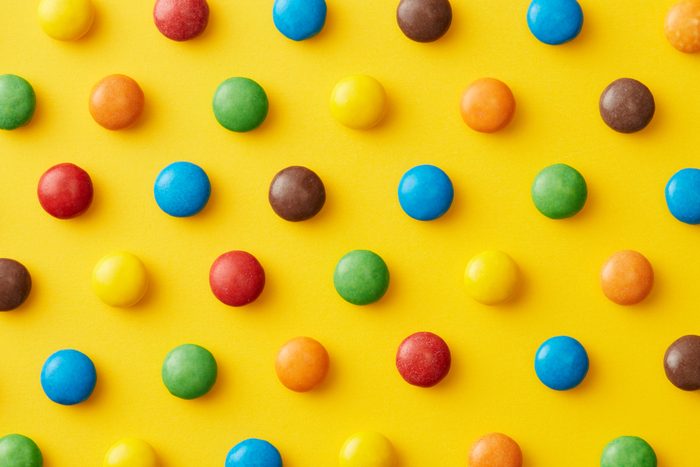Rainbow Risks: 6 Artificial Food Colors You Need To Know About
Updated: Aug. 22, 2019

Artificial colorings are added to many different foods. They may make your food look pretty, but there can be hidden risks.
About 15 million pounds of petroleum-based dyes are used in food each year, according to the non-profit advocacy organization Center for Science in the Public Interest. Worryingly, some of those dyes have been found to be carcinogenic at high levels. Yikes.
I became even more concerned about artificial color dyes when I read some of the statistics in the book, Rich Food, Poor Food. For example: “Three dyes—red #40, yellow #5, and yellow #6—account for 90 percent of all dyes used. While still approved for use in the United States, many other countries have banned these chemical coloring agents.”
The Food and Drug Association (FDA) says that there is “a reasonable certainty of no harm” for every color additive it approves. What’s more, it also says reactions to food dyes are rare. Still, some consumers worry about potential health hazards that have been linked to color additives (primarily in animal studies).
You might be tempted to swear off every treat you love with artificial coloring. Instead, focus on these six, according to Jayson Calton, PhD, an integrative physician and nutritionist in Nokomis, Florida and co-author of Rich Food, Poor Food.
Citrus Red 2

This artificial colorant caused bladder tumors in animal studies. That’s why it is banned for human consumption. The exception: It can be used to add a brighter orange hue to the skin of oranges. In other words, grating some fresh orange zest on your next dish may bring more than you bargained for. Here’s why some orange peel is dyed.
Blue #1 (E133) and Blue #2 (E132)

Countries including Norway, Finland, and France have banned these dyes, likely because they have been linked to brain cancer. These additives are found in certain candy, cereal, soda drinks, and sports drinks. Surprisingly, it may also be added to pet food.
Red #3 (E127) and Red #40 (E129)

The U.S. banned Red #3 in 1990 for topical use. That said, it can still be sold in our foods and beverages. That should make us all red in the face. The reason it’s been outlawed: Red #40 may contain the carcinogenic contaminant p-Cresidine and is thought to cause tumors of the immune system. In the UK, these red dyes aren’t recommended for children. And many European nations have banned their use. The dyes are found in fruit cocktails, maraschino cherries, grenadine, cherry pie mix, ice cream, candy, bakery products, and more.
Yellow #5 (aka Tartazine, E102)

Norway and Austria have banned the additive, which contains the cancer-causing compounds benzidine and 4-aminobiphenyl. There are 11 studies on Yellow #5; six show that it caused genotoxicity, a deterioration of the cell’s genetic material with potential to mutate healthy DNA. Some foods that may contain Yellow #5: gelatin desserts, candy, pet food, and baked goods.
Yellow #6 (E110)

Norway and Finland have banned Yellow #6. Why? It contains the same cancer-causing compounds as Yellow #5. In addition, Yellow #6 causes tumors in the kidneys and adrenal glands of laboratory animals. American cheese, macaroni and cheese, candy, and carbonated beverages may contain Yellow #6, so check labels. Read about efforts to find natural replacements for artificial coloring.
Information reprinted with the permission of Mira & Jayson Calton, authors of Rich Food, Poor Food, published by Primal Nutrition. Learn more about the book here.










